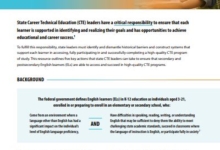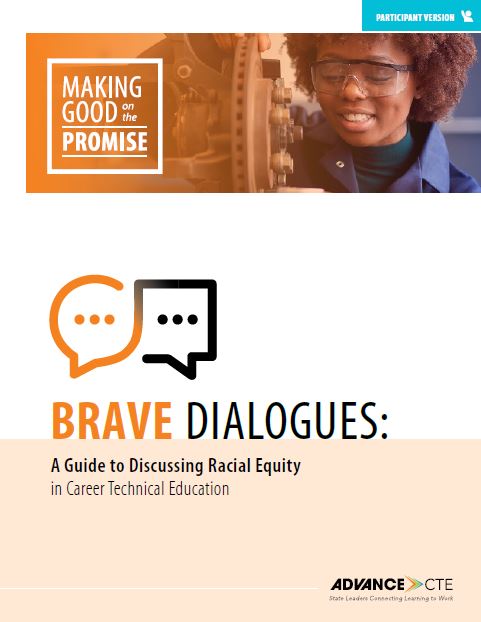The purpose of Brave Dialogues: A Guide to Discussing Racial Equity in Career Technical Education is to provide state Career Technical Education (CTE) leaders with tools to engage in discussion around racial equity in CTE and to support state CTE leaders in creating an environment in which all stakeholders have the language and comfort to discuss challenges and opportunities related to racial equity in CTE. This new resource is a part of the Making Good on the Promise Series confronting the negative aspects of CTE’s legacy and defining the key challenges learners face today.
Through six sessions ranging from 60 to 90 minutes, this guide will walk participants of brave dialogue through critical self-reflection. The critical self-reflection framework has three components:
- Awareness: Participants become aware of their own values, assumptions and biases as it relates to issues of race and race relations and what impact those biases may have on others.
- Knowledge: Participants become knowledgeable of cultural heritage, life experiences and historical backgrounds of diverse groups in society. They understand how these differences impact the choices and behaviors of people who belong to different cultural, racial and ethnic groups; how those differences are frequently perceived by society and what meanings are attached to them; and an understanding of within group differences and the intersection of multiple identities.
- Skills: Participants apply and translate the awareness and knowledge components of the framework towards critical self-reflection into good policy and practice.
This resource is the participant version of the discussion guide, facilitators should use the accompanying facilitator addendum to be prepared to lead the discussions included in the guide.






